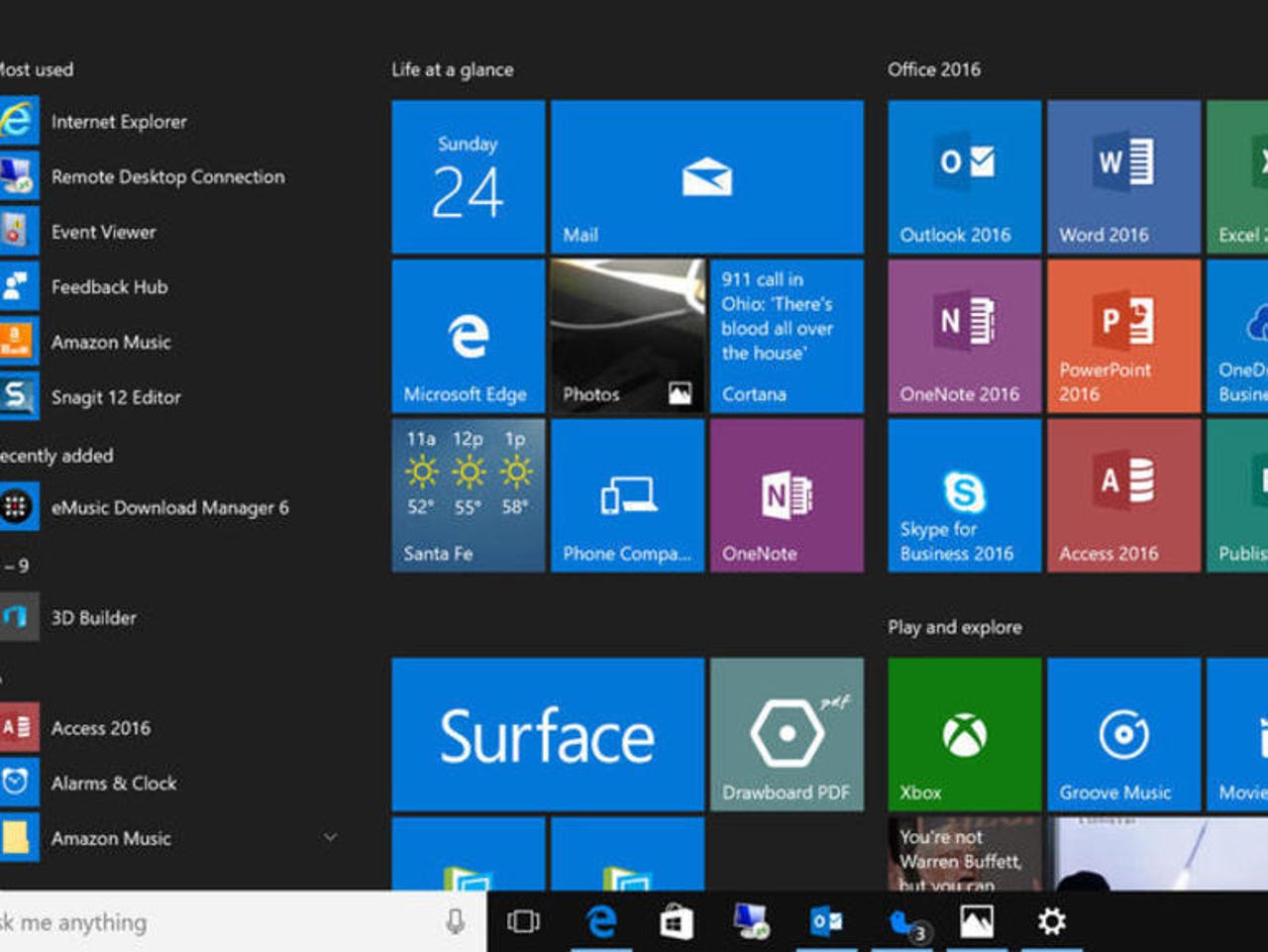Windows is trying to escape the PC, again


The PC is Windows' stronghold, and, despite predictions of its demise, the PC seems to be holding its own, thanks in part to some nice hardware designs coming out of Microsoft recently.
But a few projects that Microsoft has been working on recently also show how it wants a life for Windows beyond the classic PC.
One of these is the effort to get Windows 10 running on ARM. Running Windows on ARM chips - the same chips used to run smartphones - means that Windows could start appearing on small, lighter, always-on devices. The first hardware is expected later this year.
Another project that could still show promise is Continuum, which allows a Window Phone device like the Elite X3 to dock with a keyboard and monitor and perform like a PC.
And finally there is Windows 10 S - a locked-down version of Windows 10 that aims to compete with Chromebooks on ease of use.
All these projects are looking at slightly different things, but they are all linked in their goal to take Windows beyond its traditional PC - that is, desktop and laptop - territory.
Microsoft has been here before of course, the most recent attempts to get beyond the classic PC being Windows RT and Windows Mobile. Neither went well.
Released in October 2012, Windows RT was a stripped back version of Windows that ran on ARM chips and only worked with apps from the Windows Store, and first appeared Microsoft's own Surface RT hardware.
But consumers didn't really understand why they should buy an underpowered version of Windows and developers were reluctant to re-write their existing apps to run on ARM. In the end Microsoft had to take a $900m write-down on the Surface RT stock it couldn't shift.
The story of Window Phone is slightly different to start with but has a similar ending: Microsoft bought Nokia's smartphone business for 5.4bn in 2013, but struggled to compete with two huge and well-entrenched rivals in the form of Google's Android and Apple's iOS. Again, a lack of apps hurt Windows Phone too, and Microsoft saw its market share dwindle to almost nothing.
Windows tablets through the ages: The good, the bad and the ugly, in pictures
So what is different this time? It seems like Microsoft has learned from some of its mistakes at least.
Of the three projects, Windows on ARM looks the most promising, as this time around it is being presented as a fully-fledged version of Windows able to run x86/Win32 apps, albeit through emulation.
If it takes off there are plenty of possibilities for light, fanless and always-on devices here. That could mean tablets or smartphones, or something inbetween (perhaps like the rather lovely Courier, which never saw the light of day).
There aren't many Continuum phones around but what's available shows promise as the ZDNet review suggests, although it remains a niche at best.
Windows 10 S is also a hard one to predict: again, as with RT there's the challenge of persuading consumers and businesses why they should settle for a version of Windows that can't run the Win32 apps they know and have to rely on the Windows Store, which doesn't have everything they want, and makes you use Edge rather than a more familiar browser. And early reviews haven't been good either.
The bigger question is whether Microsoft can make a real breakthrough with any of these new categories. The desktop is Microsoft's home territory but when it comes to mobile it's an outsider at best. Android and iOS are firmly in control and as Microsoft found last time around, dislodging them is going to be incredibly hard.
However, it seems that Microsoft could be finally getting over the technical issues that have held back its ambitions beyond the desktop. The next question is to persuade consumers why they should make the switch.
Previously on Monday Morning Opener:
- Governments to declare war on mathematics and dumb criminals
- 3 things you need to know about cybersecurity in an IoT and mobile world
- WWDC 2017: Apple's to-do list needs to include a dose of AI
- Governments stand ready to regulate a cyberscape they do not understand
- Ransomware and the age of insecurity
- Omnichannel debunked in less than 5 minutes
- 3 things to know about the cloud v. data center decision
- A VPN will not save you from government surveillance
- The death of the smartphone is closer than you think. Here's what comes next
- What do PCs, Samsung's Galaxy 8 and Toyota's concept vehicle have in common? Notable design
- Convergence returns as former players exit